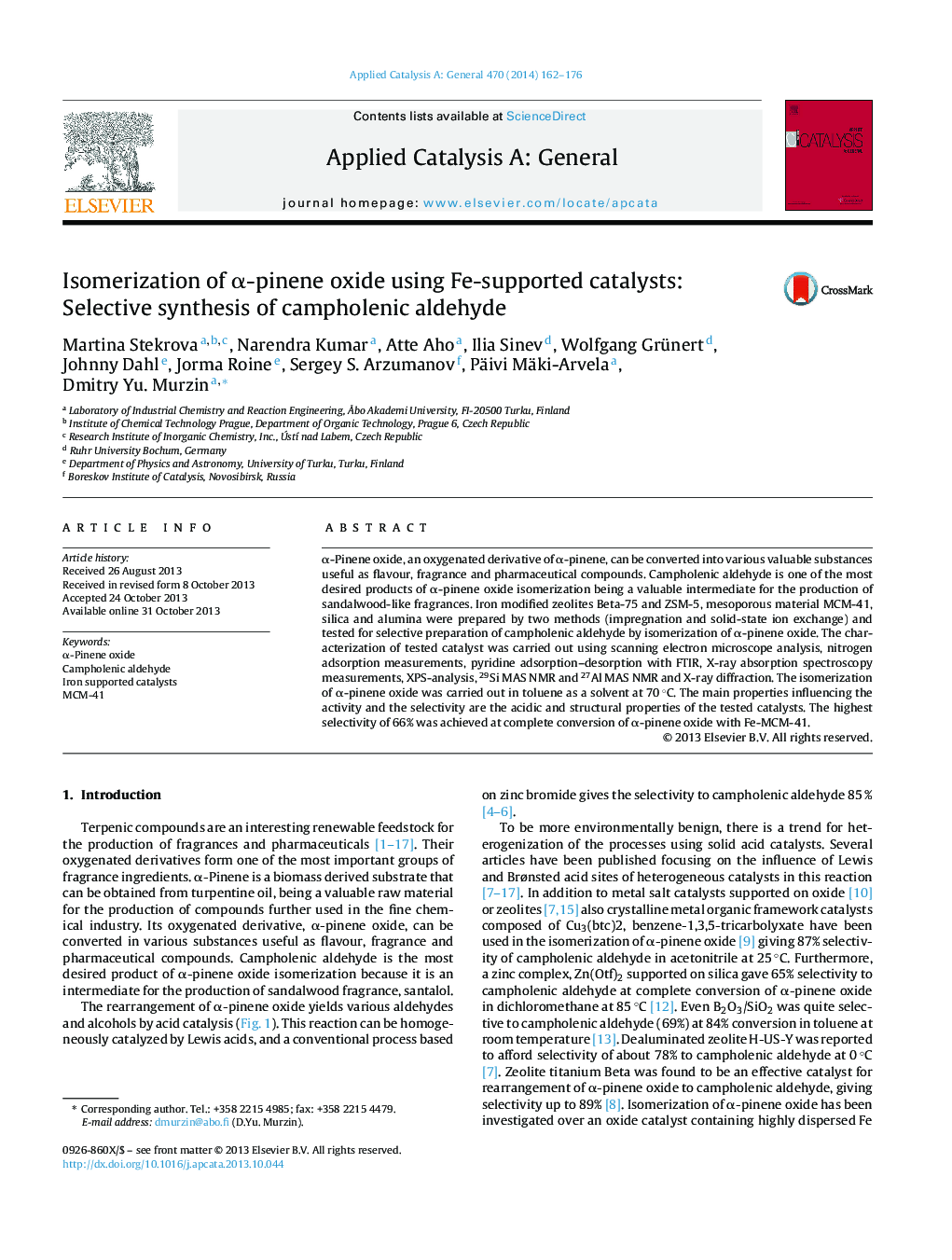| Article ID | Journal | Published Year | Pages | File Type |
|---|---|---|---|---|
| 39990 | Applied Catalysis A: General | 2014 | 15 Pages |
•Transformation of α-pinene oxide to campholenic aldehyde in toluene.•Synthesis of Fe Beta-75; ZSM-5, MCM-41 by impregnation and solid-state ion exchange.•Extensive characterization of catalysts.•Strong influence of acidity on activity and selectivity.•The highest selectivity of 66% with Fe-MCM-41.
α-Pinene oxide, an oxygenated derivative of α-pinene, can be converted into various valuable substances useful as flavour, fragrance and pharmaceutical compounds. Campholenic aldehyde is one of the most desired products of α-pinene oxide isomerization being a valuable intermediate for the production of sandalwood-like fragrances. Iron modified zeolites Beta-75 and ZSM-5, mesoporous material MCM-41, silica and alumina were prepared by two methods (impregnation and solid-state ion exchange) and tested for selective preparation of campholenic aldehyde by isomerization of α-pinene oxide. The characterization of tested catalyst was carried out using scanning electron microscope analysis, nitrogen adsorption measurements, pyridine adsorption–desorption with FTIR, X-ray absorption spectroscopy measurements, XPS-analysis, 29Si MAS NMR and 27Al MAS NMR and X-ray diffraction. The isomerization of α-pinene oxide was carried out in toluene as a solvent at 70 °C. The main properties influencing the activity and the selectivity are the acidic and structural properties of the tested catalysts. The highest selectivity of 66% was achieved at complete conversion of α-pinene oxide with Fe-MCM-41.
Graphical abstractFigure optionsDownload full-size imageDownload high-quality image (76 K)Download as PowerPoint slide
